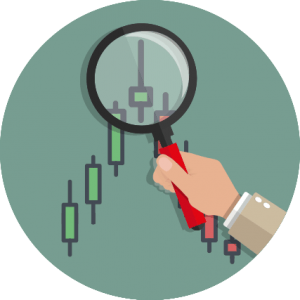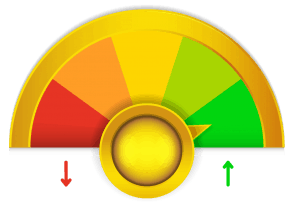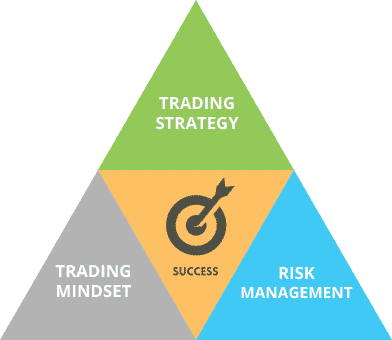When you first start out trading, there tends to be a lot of excitement and eagerness to jump into trades. Weeks or months of researching strategies, checking charts, reading material and guides will undoubtedly lead to a build-up of trading tension. This often times leads to overtrading. So, how to stop overtrading is the question.
It’s only natural to see this excitement transition into a burst of trades taken.
However, typically within a month, most traders will start to see the problems that this overtrading can have on results. Excitement and passion are great for trading, don’t get me wrong, but you do have to be aware of some of the pitfalls that this can bring about.
Below are the most common ‘symptoms’ of overtrading:
- Low quality trades
- Decreasing win rate
- Over analysing
- Entering too early
- Doubt
- Burnout
Each of these symptoms are detrimental to your success in forex trading, especially if you combine the effects of just two or three.
Fortunately, overtrading is a common problem and there are methods to push back against it.
So if you find yourself struggling with overtrading, read on to find out how you can prevent it and start prioritizing profitability!
Are Your Entry Requirements Good Enough?
One of the most important aspects of your trading strategy is how you enter a trade. You need to ask yourself:
What conditions do I need to see that will trigger a trade entry?
This question is pivotal to your success in trading, but it is also very easy to slip up at this first hurdle.

If your entry requirements are weak or accommodate a need to enter trades regularly, you will see a negative impact almost immediately. That is because this question is your quality control point.
What do I mean by that?
Well, when you are looking to enter a trade there are a range of factors that determine the strength of the trade and the risk attached to it. There’s nothing stopping you from just entering a trade at any point, which is why we need entry requirements.
Your entry requirements function as a filter for potential trades.
If those requirements are too low, you will inevitably enter low quality trades, opening yourself up to more risk, leading to more losses.
If the requirements are too high, you may never even get a chance to enter a trade because they are too specific and perfectionist.
As with many things, a happy medium is your best bet. Part of the process of becoming a profitable trader is trial and error.
After a year or so of trading, you can expect to have entry requirements for specific setups and even specific pairs. Data collection is priceless in this regard.
Entry requirements also provide you with an objective checklist that you have to go through, further preventing any quick decisions and reducing the impact of subjective and emotional trading.
So please, prioritize your entry requirements and make sure you develop them as you trade!
Why is Risk Assessment Important?
I have mentioned risk in the previous section a few times, and there is a good reason for it.
Every single trade you take carries risk and part of your process as a trader is to approximate the level of risk you see in a trade.

Risk also includes the management of your finances.
This will include how much risk you take on per trade, whether you take on multiple trades (and the maximum number), and your maximum risk exposure (how much of your account can you cumulatively risk across all trades).
It is vital that you have a plan for these in order to avoid overtrading.
Let’s say I am in two trades already and there is a third trade about to trigger. The two trades I am in each have a risk of 2%, resulting in 4% of my account currently at risk.
If I have no rule on my maximum risk exposure, I will enter the third trade. For clarity’s sake, let’s say I also risk 2% of my account in the last trade, resulting in 6% risk exposure overall.
Disaster. All trades have lost and within a few hours I have lost 6% of my account.
Now, if I had a rule in place that my maximum risk exposure is 4%, I would not have entered that trade, preventing further losses. I could also have a rule that I am only allowed 2 open trades at any given time, which would have prevented me entering the trade.
However you choose to manage your risk, what this does is prevent you from losing a large portion of your account in a short span of time, whilst also preventing overtrading.
You could find that the third trade actually won whilst the first two lost, which may suggest to you that you shouldn’t cap your trades.
That would be a big mistake.
The larger purpose that this risk assessment provides is that it forces you to assess the strength of a trade and prioritise higher quality, higher chance of success trades over low quality, risky ones.
This in turn increases your analytical skills as a trader, prevents you from overtrading, and prevents you from turning your trading into gambling.
In this sense, risk assessment is going to help you in so many ways that I can’t stress enough the value it will bring to your trading.
Push Back Against the Dangers of FOMO
This final section takes a closer look at the psychological side of overtrading.
One of the biggest reasons for overtrading that I have seen from the thousands of Forex4noobs members is the problem of Fear of Missing Out (FOMO). I am sure most of you will have heard of this.
FOMO will likely impact your trading at some point, and for the majority of people it will be a recurring problem. It is easy to slip into this mindset and it can take control of your decision making.
The earlier scenario of being in two trades and entering a third is relevant here.
What if that third trade is a winner? You don’t want to miss that trade, especially if the other two aren’t going so well. There is so much opportunity on the charts, you could make half your account if you take 20 trades in 2 weeks!
The core problem with these thoughts is that they run counter to the core principle of forex trading: sustainability.
If you are taking ten trades a day, risking 5% on each one, your account will dry up and it will dry up extremely fast.
You can’t trade on the market if you have no capital.
It is no secret that if you have a large amount of capital in forex, you can earn more and do so in a lower risk way. This is how the big boys make their money – small amounts of account risk that is still a vast amount of profit with a winning trade.
Obviously we would all like to trade with a large pool of capital. However, you will never get there if you keep entering every single possible trade you see.
A measured, objective, calculated approach is more sustainable in the long run because you can foster your account to larger sums.

Patience plays a big role in this sustainable approach to forex trading. Having entry requirements and assessing the relative risk of potential trades serve as roadblocks to you entering a trade on a whim.
In this way, they help you to practice patience by forcing you to slow down.
Nevertheless, your mind is a powerful thing and it can choose to ignore those roadblocks if it so chooses. So cultivating patience in your approach to trading is just as important.
Too many traders jump in too early on trades – it is one of the first struggles for new traders and is a major sign of overtrading.
Be patient.
If you wait for the next couple of candles to play out, you may be presented with a better entry. Or the trade could become invalid and you will thank yourself for holding off and letting price tell its story.
Ultimately, you are your own worst enemy when it comes to overtrading. If you can manage yourself, it will translate over to your results.
If you want to ask any questions in regards to overtrading, please do so in the comments below and I will be more than happy to give a helping hand.


Comments are closed.